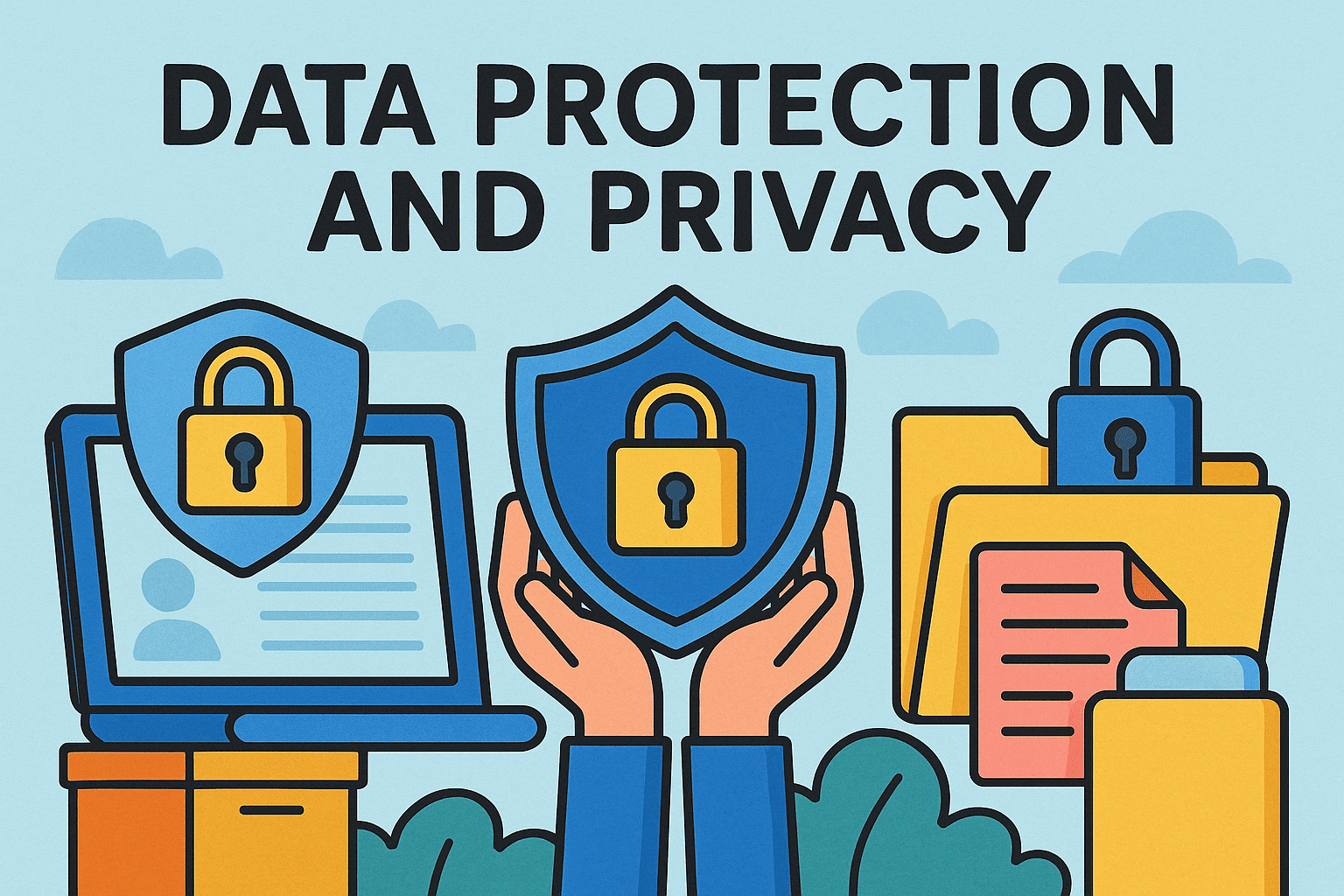Updated on October 21, 2025, by OpenEDR
In today’s hyperconnected world, data protection and privacy are no longer optional—they’re essential. With cyberattacks rising by more than 600% in the last decade and global regulations tightening, organizations face mounting pressure to secure sensitive information. From IT managers to CEOs, everyone must recognize that protecting personal and corporate data is not just about compliance, but about survival.
This article explores the importance of data protection and privacy, the risks businesses face, global compliance frameworks, and best practices to safeguard critical information.
What Is Data Protection and Privacy?
Data protection refers to the policies, tools, and practices used to secure information from unauthorized access, loss, or corruption. Privacy, on the other hand, focuses on the individual’s right to control how their personal data is collected, used, and shared.
Together, data protection and privacy ensure that:
Information remains confidential.
Data integrity is preserved.
Businesses remain compliant with GDPR, HIPAA, or CCPA.
Customers trust organizations with their information.
Why Data Protection and Privacy Matter for Businesses
Failure to safeguard data can result in:
Financial Losses: Data breaches cost companies an average of $4.45 million in 2023.
Reputation Damage: Customers lose trust quickly after a breach.
Legal Penalties: Non-compliance can lead to fines in the millions.
Operational Disruption: Cyberattacks can halt productivity for days or weeks.
With the rapid adoption of cloud security services, IoT devices, and mobile technologies, the attack surface for cybercriminals is expanding. Businesses must respond with proactive security strategies.
Common Threats to Data Protection and Privacy
1. Phishing and Social Engineering
Attackers trick employees into giving away credentials, often leading to breaches.
2. Ransomware Attacks
Hackers encrypt sensitive files and demand payment for access.
3. Insider Threats
Employees or contractors with privileged access may intentionally or accidentally compromise data.
4. Cloud Misconfigurations
Poorly secured cloud environments expose customer data to unauthorized users.
5. Third-Party Risks
Vendors or partners with weak security can create entry points for attackers.
Global Data Privacy Regulations
Businesses must align their strategies with international data protection laws:
GDPR (General Data Protection Regulation): Governs how EU citizens’ data is handled.
CCPA (California Consumer Privacy Act): Focuses on consumer rights in California.
HIPAA (Health Insurance Portability and Accountability Act): Protects healthcare data in the U.S.
LGPD (Brazil’s Lei Geral de Proteção de Dados): Similar to GDPR, but for Brazil.
These frameworks highlight the increasing importance of compliance-driven cybersecurity.
Best Practices for Data Protection and Privacy
To stay ahead of cybercriminals, organizations must implement layered defenses:
1. Adopt Zero Trust Security
Verify every user and device before granting access.
Enforce least-privilege access policies.
2. Encrypt Data Everywhere
Use AES-256 encryption for sensitive files.
Encrypt data both in transit and at rest.
3. Regular Security Audits
Conduct penetration testing and vulnerability scans.
Monitor compliance with global regulations.
4. Employee Training
Educate staff on phishing awareness.
Build a security-first culture across all departments.
5. Incident Response Planning
Develop a disaster recovery plan.
Use automated response systems to minimize breach impact.
The Role of Technology in Protecting Data
Modern organizations can leverage advanced tools to improve data protection and privacy:
Endpoint Security Platforms: Monitor and protect all connected devices.
Cloud Security Services: Secure workloads in hybrid and multi-cloud environments.
AI-Powered Threat Detection: Identify unusual activity in real time.
Data Loss Prevention (DLP): Prevent sensitive data from leaving the network.
The Future of Data Protection and Privacy
As cyber threats grow more advanced, businesses must prepare for:
AI-driven cyberattacks that bypass traditional defenses.
Quantum computing risks to encryption methods.
Tighter regulations across multiple industries and regions.
Those who adopt proactive strategies today will be best positioned to thrive in tomorrow’s digital economy.
FAQs on Data Protection and Privacy
1. What’s the difference between data protection and privacy?
Data protection secures information from cyber threats, while privacy ensures individuals control how their data is used.
2. How do companies ensure compliance with GDPR and CCPA?
By adopting policies for consent, transparency, and secure storage of personal data.
3. Why is encryption important for data privacy?
Encryption makes stolen data unreadable, reducing the risk of misuse.
4. What industries are most at risk of data breaches?
Healthcare, finance, and retail face the highest risk due to sensitive information handling.
5. How often should businesses update their cybersecurity strategy?
At least annually, or immediately after adopting new technology or facing new threats.
Conclusion
In the digital-first economy, data protection and privacy are critical pillars of trust, compliance, and business success. Organizations that fail to prioritize cybersecurity risk devastating financial losses and reputational harm.
The time to act is now—before the next breach.
👉 Get Started with Xcitium’s OpenEDR Advanced Security Solutions Today
